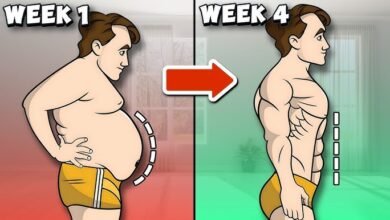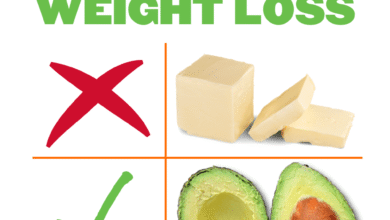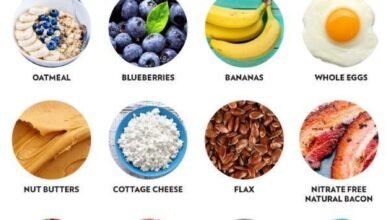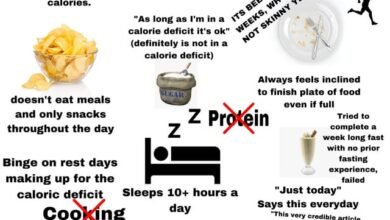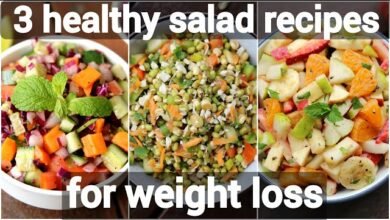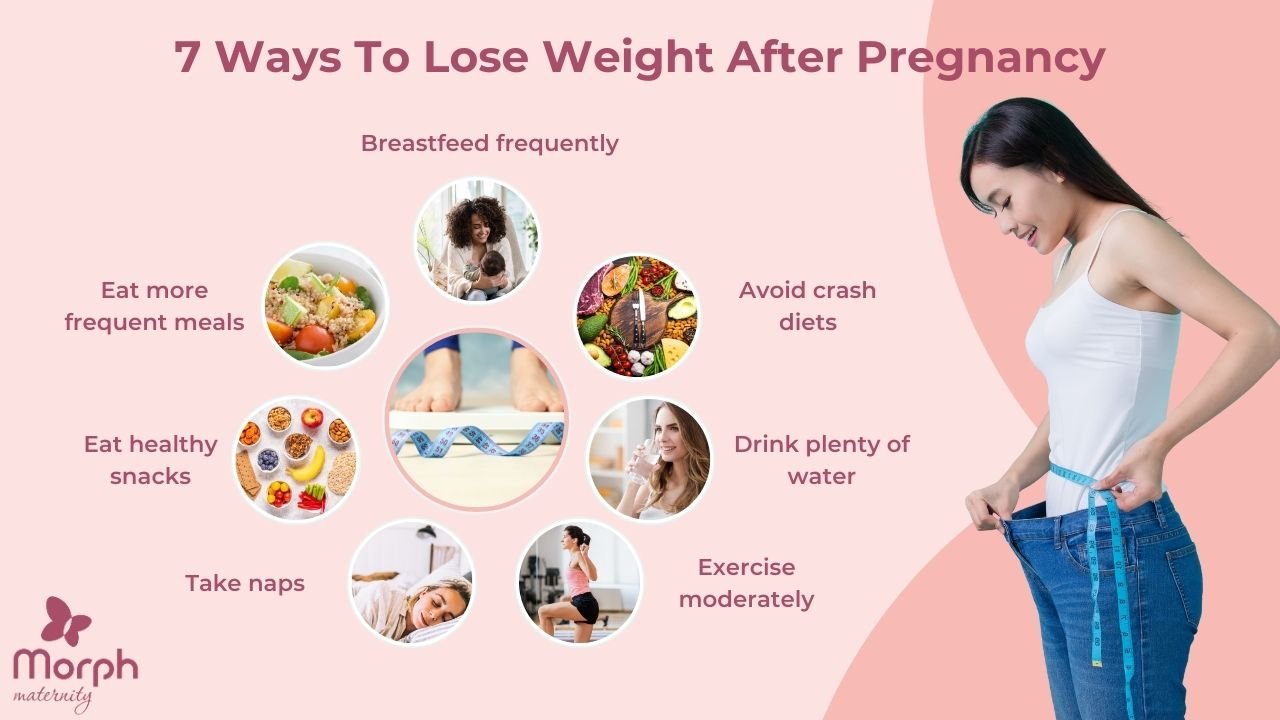
What is the Best Safest Way to Lose Weight
The safest way to lose weight is through balanced eating and regular exercise. These methods promote health without risking your well-being.
Losing weight can be challenging, especially with so many options available today. Some diets promise quick results but may harm your body. Others require intense workouts that aren’t sustainable long-term. Finding a safe and effective approach is key to achieving lasting weight loss.
A balanced diet provides essential nutrients while keeping calorie intake in check. Regular exercise boosts metabolism and strengthens muscles. Together, these strategies support healthy weight loss and improve overall health. This blog post will explore these methods further, helping you choose the best path for your weight loss journey.

Credit: www.topnutritioncoaching.com
Balanced Diet Essentials
A balanced diet is key to safely losing weight. Focus on fresh fruits, vegetables, lean proteins, and whole grains. Drink water and limit sugary drinks. Eat smaller portions and avoid processed foods. Regular exercise complements a healthy diet, helping to burn calories and maintain a healthy weight.
Losing weight can feel like a daunting task, but focusing on balanced diet essentials can make the journey smoother and more effective. Eating well doesn’t mean depriving yourself of the foods you love. Instead, it’s about understanding what your body needs and how to give it just that. ###Nutrient-rich Foods
The cornerstone of a balanced diet lies in choosing nutrient-rich foods. These foods provide the necessary vitamins and minerals your body requires without the extra calories. Think colorful fruits and vegetables, whole grains, lean proteins, and healthy fats. Have you ever noticed how a vibrant salad makes you feel refreshed and energized? That’s the magic of nutrient-rich foods at work. Next time you shop, consider adding spinach, quinoa, or salmon to your cart. These options are not only delicious but also pack a nutritional punch. ###Portion Control
Portion control is a game-changer when it comes to weight loss. Eating smaller portions can help you manage calorie intake while still enjoying your favorite meals. It’s not about eating less but eating smart. Have you ever filled your plate to the brim, only to feel stuffed and regretful afterward? You’re not alone. Try using smaller plates or bowls to help control portions. This simple change can make a big difference without making you feel deprived. Engaging with the idea of balanced diet essentials means embracing these small, impactful changes. What small change can you start today? Perhaps it’s adding a new vegetable to your meal or simply paying attention to portion sizes. Every step counts towards a healthier you.Regular Physical Activity
Regular physical activity plays a crucial role in weight loss. It helps burn calories and boosts metabolism. Exercise also improves mood and increases energy levels. Consistent workouts lead to better overall health. Two main types of physical activities are cardio workouts and strength training. Each has unique benefits for weight loss.
Cardio Workouts
Cardio workouts are essential for burning calories. They increase heart rate and use large muscle groups. Popular options include walking, running, and cycling. Swimming is also a great choice. Cardio exercises improve heart health and boost endurance. They support fat loss and help maintain a healthy weight.
Strength Training
Strength training builds muscle and burns fat. It involves lifting weights or using resistance bands. Muscle burns more calories than fat. This helps with weight loss and body toning. Activities include squats, push-ups, and deadlifts. Strength training increases metabolism, even after workouts. It provides a strong foundation for overall fitness.
Mindful Eating Practices
Mindful eating practices offer a gentle approach to losing weight. They focus on awareness and understanding of your body’s needs. This method encourages eating with intention and attention. It helps you enjoy your food and listen to your body. This can lead to healthier eating habits and weight loss.
Listening To Hunger Cues
Listening to hunger cues is vital for mindful eating. Begin by asking yourself if you’re truly hungry. Rate your hunger on a scale from one to ten. Eat only when you feel physical hunger. Avoid eating out of boredom or routine. Slow down and chew your food thoroughly. This allows your brain to register fullness. It helps prevent overeating and promotes satisfaction.
Avoiding Emotional Eating
Emotional eating can sabotage weight loss efforts. Identify triggers that lead to emotional eating. Stress, sadness, or loneliness often cause unnecessary eating. Find alternative activities to handle these emotions. Try walking, reading, or talking to a friend. Keep a food journal to track patterns. This awareness helps break the cycle of emotional eating. Focus on eating for nourishment, not comfort.
Hydration Importance
Staying hydrated is crucial for weight loss. Water helps your body function well. It supports digestion and keeps you full. Drinking enough water can boost your metabolism. This means you burn calories more efficiently. Hydration is a simple and effective tool in weight management.
Water Intake Benefits
Drinking water helps control your appetite. Sometimes thirst feels like hunger. A glass of water can help. It may stop unnecessary snacking. Water aids in flushing toxins from your body. This keeps your organs healthy. Proper hydration can improve your skin’s appearance too.
Limiting Sugary Drinks
Sugary drinks add extra calories quickly. They do not make you feel full. Replacing soda with water can help reduce calorie intake. It also lowers the risk of weight gain. Choose water or herbal tea over sweet drinks. This small change makes a big difference.
Sleep And Weight Loss
Many people overlook the role of sleep in weight loss. Yet, quality sleep is crucial for effective weight management. Sleep impacts hunger hormones and energy levels. Poor sleep can sabotage even the best diet plans. Let’s explore how sleep quality and duration influence weight loss.
Sleep Quality Impact
Sleep quality affects your body’s ability to burn calories. Bad sleep disrupts hormones like leptin and ghrelin. These hormones control hunger and fullness. Disrupted sleep can increase cravings for unhealthy foods. You might eat more and gain weight. Quality sleep helps maintain a healthy metabolism. It supports your body’s natural fat-burning processes.
Ideal Sleep Duration
How long you sleep matters for weight loss. Experts recommend 7 to 9 hours of sleep per night. Less sleep can lead to weight gain. It affects energy levels and decision-making. Tiredness can make you skip workouts. You might choose quick, unhealthy snacks. Getting enough rest helps you stay active and make healthier choices.
Stress Management Techniques
Stress can be a significant barrier to losing weight safely and effectively. It often triggers emotional eating, making it challenging to stick to a healthy diet. By managing stress, you can create a more balanced approach to weight loss.
Consider some stress management techniques that can support your journey. You might be surprised by how small changes can lead to big results.
Meditation Benefits
Meditation is a powerful tool for managing stress. It helps calm your mind and improve focus. Just a few minutes a day can make a difference.
Imagine closing your eyes, taking deep breaths, and letting go of tension. This practice can reduce stress hormones, which can help you maintain a healthier weight.
When stress is reduced, your cravings for unhealthy foods may decrease. By incorporating meditation into your routine, you might find it easier to make healthier food choices.
Exercise For Stress Relief
Exercise is not just about burning calories; it’s also a fantastic way to relieve stress. When you move, your body releases endorphins, the feel-good hormones.
Think about the last time you took a brisk walk or danced to your favorite song. Didn’t you feel a lift in your mood?
Regular physical activity can help you manage stress and improve your mental well-being. Find an activity you enjoy, whether it’s yoga, cycling, or a simple walk in the park.
What type of exercise makes you feel good? Embrace it, and let it be a part of your stress management toolkit.
By using these stress management techniques, you can support your weight loss journey. Which one will you try today?
Setting Realistic Goals
Setting realistic goals is crucial for safe weight loss. It keeps you motivated and focused. Unrealistic goals can lead to disappointment and unhealthy habits. By setting achievable targets, you build a foundation for lasting change.
Short-term Milestones
Short-term milestones are small, achievable targets. They help track progress without overwhelming you. For example, aim to lose one pound each week. This is both safe and realistic. Celebrate each milestone to boost your confidence. Rewards like a new book or a relaxing day can motivate you.
Long-term Targets
Long-term targets require patience and commitment. They focus on the bigger picture. Think about where you want to be in a year. Set a goal like losing 20 pounds in 12 months. This gives you a clear vision. Break it down into manageable steps. Regularly review your progress to stay on track.
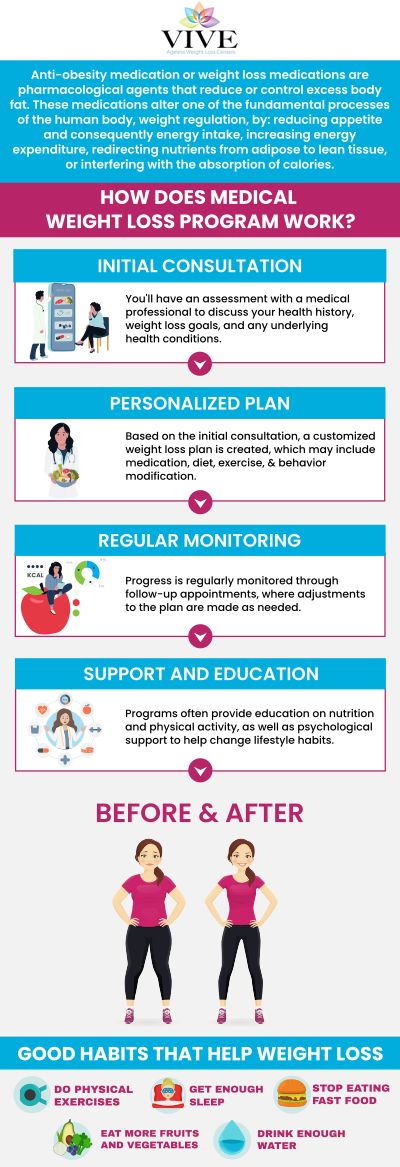
Credit: www.viveagelessweightloss.com
Monitoring Progress
Monitoring your progress is crucial for safe weight loss. It helps you stay on track. It also provides motivation and insight. Knowing how your body responds is key. This helps you make informed decisions.
Tracking Tools
Tracking tools are essential for monitoring weight loss. They help you see patterns. Popular tools include apps, journals, and smart scales. Apps like MyFitnessPal track calories and exercise. Smart scales measure weight and body fat. Journals offer a personal touch. You can record feelings and achievements. Choose the tool that fits your lifestyle.
Adjusting Strategies
Adjusting strategies is part of weight loss. Not all plans work for everyone. If progress stalls, review your approach. Look at your eating habits and exercise routine. Consider consulting a nutritionist. They can offer tailored advice. Flexibility in your plan is key. Small changes can make a big difference. Stay positive and patient with yourself.

Credit: www.youtube.com
Frequently Asked Questions
What Is The Safest And Most Effective Way To Lose Weight?
Adopt a balanced diet rich in whole foods and maintain regular physical activity. Aim for gradual weight loss of 1-2 pounds per week. Drink plenty of water and get enough sleep. Avoid fad diets and consult a healthcare professional for personalized advice.
What Is The 30 30 30 Rule For Weight Loss?
The 30 30 30 rule involves consuming 30 grams of protein, 30 minutes of exercise, and drinking 30 ounces of water daily for weight loss. This approach aims to boost metabolism, improve muscle growth, and enhance hydration, contributing to effective weight management and overall health.
What Is The Safest Weight Loss Option?
The safest weight loss option involves a balanced diet and regular exercise. Prioritize whole foods, lean proteins, and vegetables. Engage in activities like walking, cycling, or swimming. Consult a healthcare professional for personalized advice. Avoid fad diets and pills. Aim for gradual weight loss of 1-2 pounds per week.
What Is The Safest And Most Acceptable Method Of Losing Weight?
The safest way to lose weight is through a balanced diet and regular exercise. Focus on whole foods, lean proteins, and vegetables. Aim for gradual weight loss, around 1-2 pounds per week. Stay hydrated, get enough sleep, and consult a healthcare professional for personalized advice.
Avoid fad diets and extreme restrictions.
Conclusion
Losing weight safely takes patience and smart choices. Focus on balanced meals. Exercise regularly. Drink plenty of water. Stay positive and motivated. Avoid quick fixes or extreme diets. Slow and steady wins the race. Listen to your body’s signals. Celebrate small successes along the way.
Consult professionals if needed. Everyone’s journey is unique. Find what works best for you. Consistency is key to lasting results. Remember, health is not just about weight. It’s about feeling good and being active. Embrace the journey with confidence and care.
Your health journey matters. Stay committed. Stay healthy.
